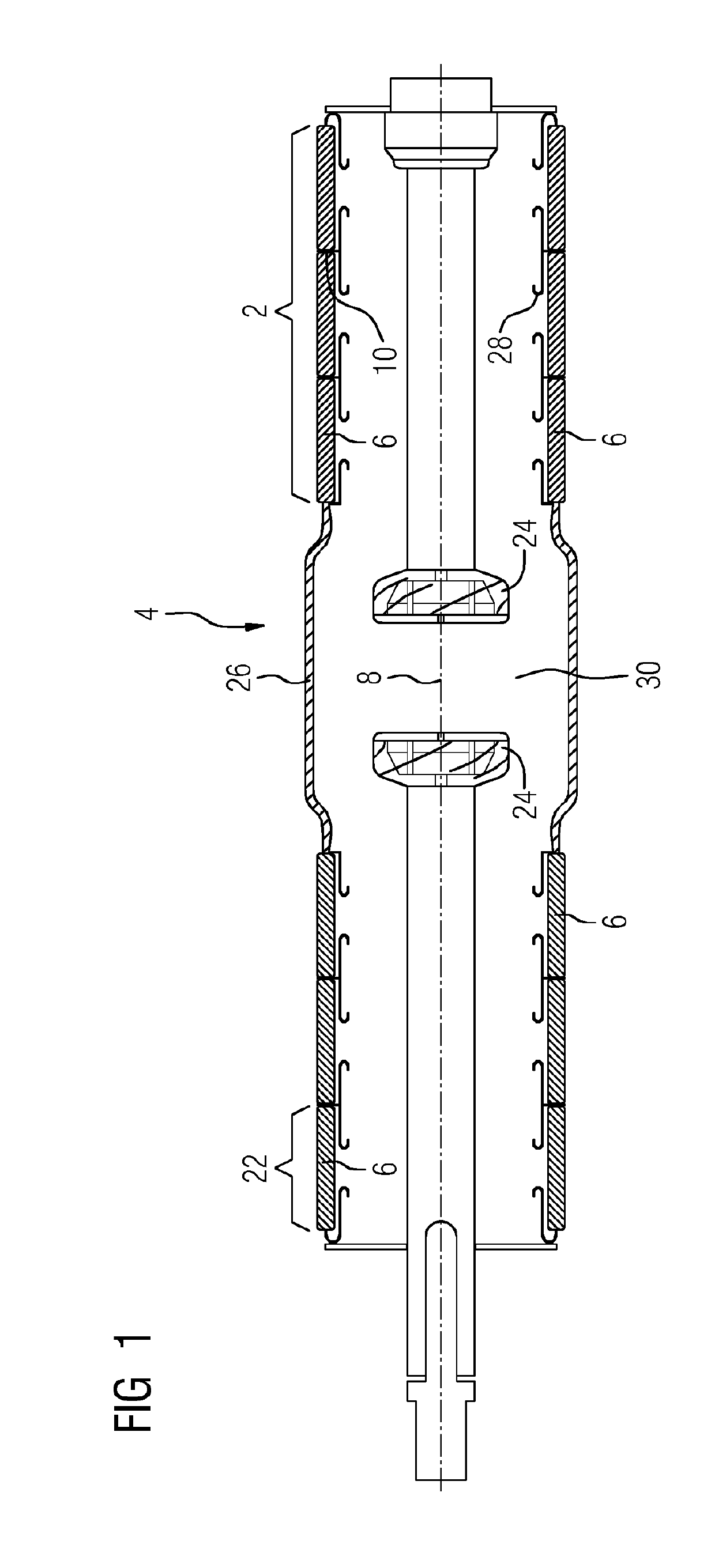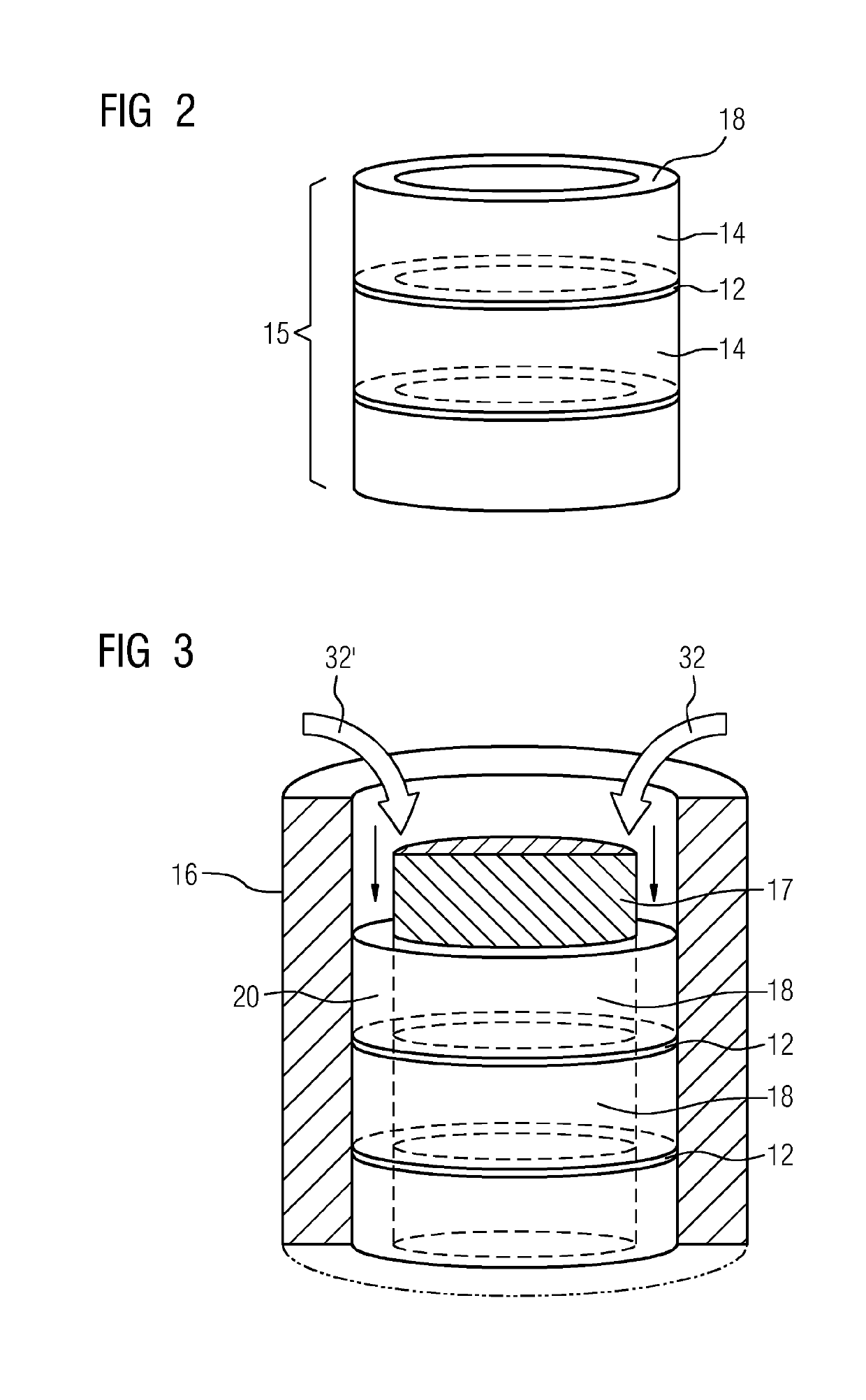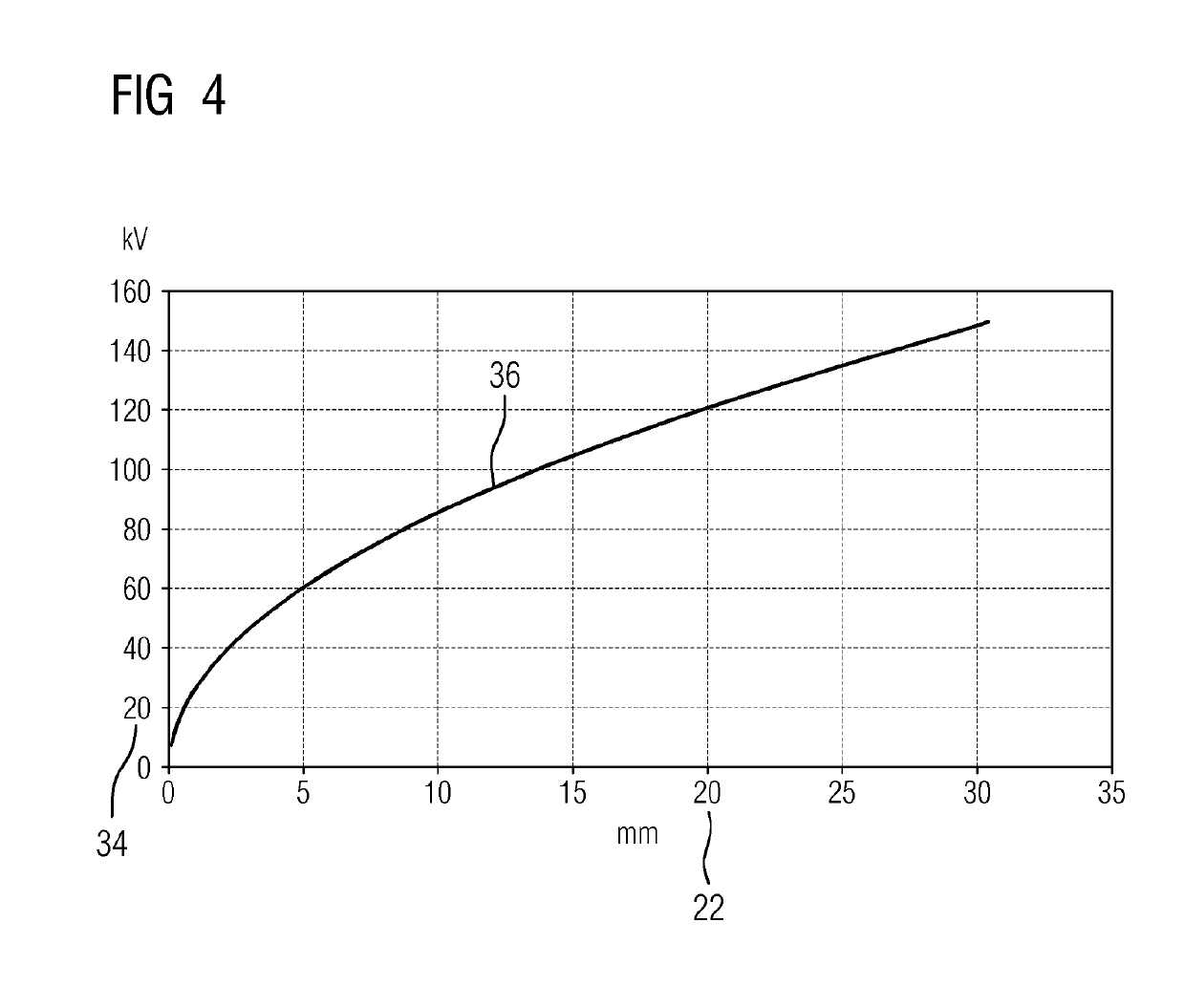Ceramic Insulator
- Summary
- Abstract
- Description
- Claims
- Application Information
AI Technical Summary
Benefits of technology
Problems solved by technology
Method used
Image
Examples
Embodiment Construction
[0023]In some embodiments, a method for producing a ceramic insulator for a high-voltage or medium-voltage switching system includes at least two axially symmetrical ceramic structural elements joined along, that is to say in the direction of, the symmetry axis of the latter, that is to say in the direction of the symmetry axis of said structural elements, and an electrically conductive equipotential layer disposed between the structural elements. Along the symmetry axis, or in the direction of the symmetry axis, respectively, herein means that in practice, and in the case of preformed green bodies being used, end faces of said green bodies are joined to one another. Furthermore, the structural elements can also assume shapes which deviate from an axial symmetry, which is why the term symmetry axis in special cases is also understood to be a symmetry face. Elliptic or polygonal bodies are thus also expedient. In some embodiments, the method includes using a base material for the equ...
PUM
| Property | Measurement | Unit |
|---|---|---|
| Length | aaaaa | aaaaa |
| Length | aaaaa | aaaaa |
| Length | aaaaa | aaaaa |
Abstract
Description
Claims
Application Information
 Login to View More
Login to View More - R&D Engineer
- R&D Manager
- IP Professional
- Industry Leading Data Capabilities
- Powerful AI technology
- Patent DNA Extraction
Browse by: Latest US Patents, China's latest patents, Technical Efficacy Thesaurus, Application Domain, Technology Topic, Popular Technical Reports.
© 2024 PatSnap. All rights reserved.Legal|Privacy policy|Modern Slavery Act Transparency Statement|Sitemap|About US| Contact US: help@patsnap.com










